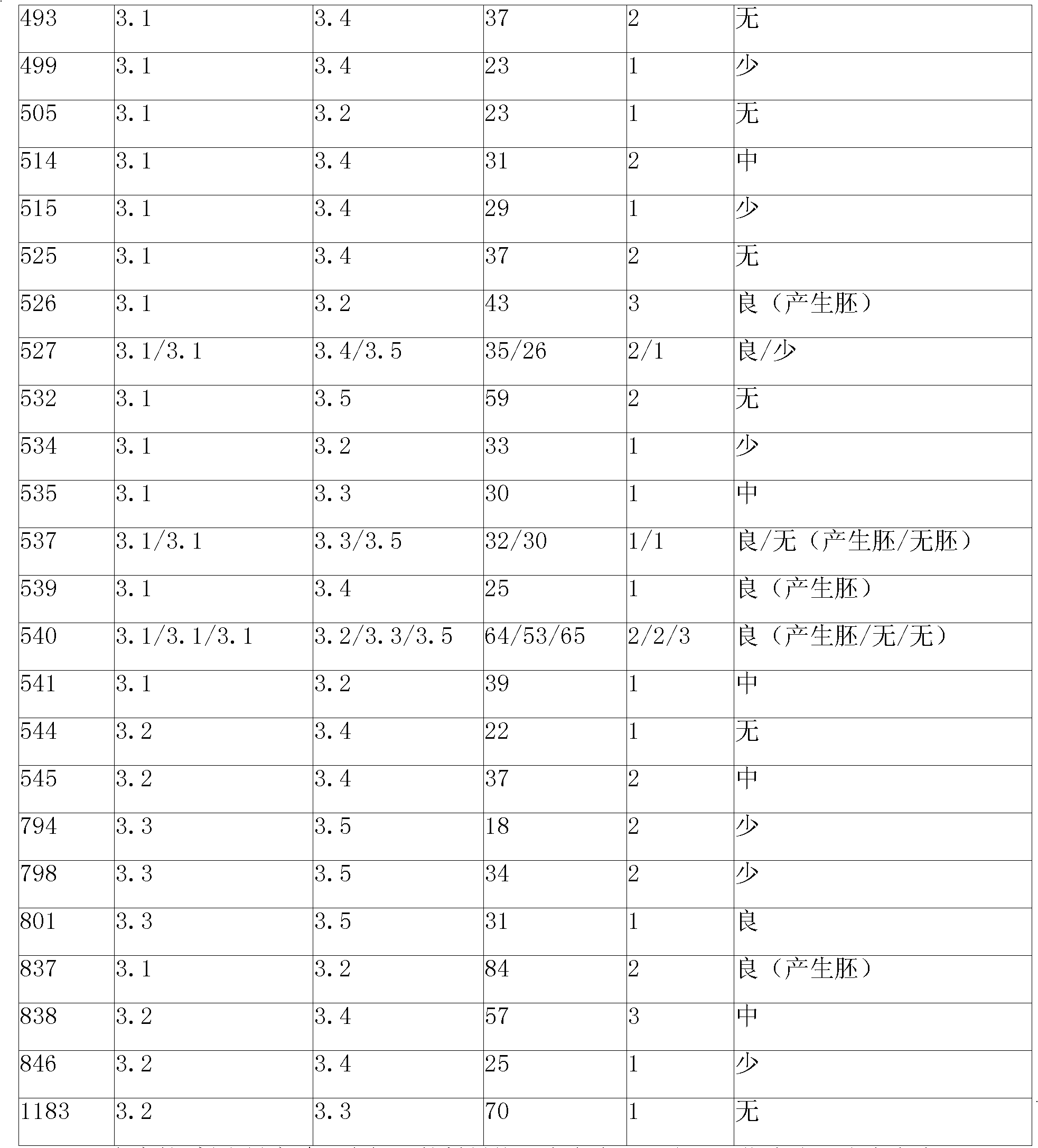Cultivation method for cabbage type rape Isolated microspore plant strain
A technology of Brassica napus and its cultivation method, which is applied in the field of cultivating free microspore plants of Brassica napus, can solve the problems of costing more manpower, material resources and financial resources, low induction rate of microspore embryos, and induction rate of microspore embryoid bodies in rapeseed. Issues such as low widespread application
- Summary
- Abstract
- Description
- Claims
- Application Information
AI Technical Summary
Problems solved by technology
Method used
Image
Examples
Embodiment 1
[0032] Embodiment 1: In the initial stage of flowering of rapeseed in spring, in the morning of fine weather (8:00~11:00), select the inflorescence of flowering 3~7 days in the field, insert water and preserve in 4 ℃ of refrigerators (1~5 days all It will not affect the production of embryos), then select the flower buds (the length of the flower buds is about 3.5mm) in the uninucleate stage and the early stage of dinucleate in the microspore development period, put them into the filter cloth, and use 70% alcohol under aseptic conditions Disinfect for about 1 min, then disinfect with 0.1% mercury liter for 10 min under aseptic conditions, and rinse with sterile water for 3 to 5 times.
[0033] Put the washed and sterilized flower buds into the B solution with a pH of 5.8-6.0 and 13% sucrose. 5 Gently extrude the pollen from the hormone-free liquid medium with a glass rod, filter it through a 300-mesh nylon membrane into a centrifuge tube, centrifuge at 800rpm for 8min, and rem...
Embodiment 2
[0036] Embodiment 2: In the initial stage of flowering of rapeseed, cut the inflorescences that have bloomed for 3 to 7 days at 8:00 to 10:00 in the morning, select flower buds with a size of 3.5 mm, place them in 4% sodium hypochlorite solution for disinfection for 10 minutes, and wash them with sterile water for 3 to 7 days. 4 times, join B 5 Culture medium, gently squeeze the flower buds with a glass rod to free the microspores into the medium, sieve to remove the bud tissue residues, and collect the microspores by centrifugation; add 55mg / l colchicine full filter sterilized NLN-13 Hormone-free liquid medium (13% sucrose, pH 5.9), cultured in dark at 32°C for 2 days at high temperature, select materials with a microspore expansion rate greater than 50%, add colchicine-free filter-sterilized NLN- 13 Hormone-free liquid medium was centrifuged and washed twice to remove colchicine, and then added to fully filtered and sterilized NLN-13 hormone-free liquid medium without colchi...
PUM
| Property | Measurement | Unit |
|---|---|---|
| length | aaaaa | aaaaa |
Abstract
Description
Claims
Application Information
 Login to View More
Login to View More - R&D
- Intellectual Property
- Life Sciences
- Materials
- Tech Scout
- Unparalleled Data Quality
- Higher Quality Content
- 60% Fewer Hallucinations
Browse by: Latest US Patents, China's latest patents, Technical Efficacy Thesaurus, Application Domain, Technology Topic, Popular Technical Reports.
© 2025 PatSnap. All rights reserved.Legal|Privacy policy|Modern Slavery Act Transparency Statement|Sitemap|About US| Contact US: help@patsnap.com


